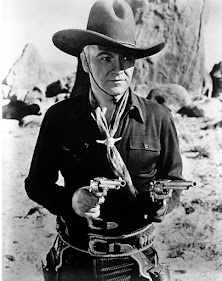Image: Francks Deceus, Arco Gallery
To understand
culture and any particular culture one must first examine how culture content
accommodates the needs of mainstream society and its individuals, because the
fit and rules of culture are meant to best accommodate the mainstream. One must
also look at how a society’s culture is responded to by groups and persons not
in the mainstream. It is here that the authenticity of the beliefs, values, and
norms of a given time are often questioned and challenged. Does the culture
content remain suitable for enough people for the society’s survival and
possible flourishing?
Sometimes efforts,
informal or formal, are undertaken to change the content and power of a culture
to better suit the times and needs of more or fewer members of a society. Democratic
societies seek to make their respective cultures more inclusive; autocracies
favor less inclusion. When minority persons join the mainstream, they expand
the inclusivity of society. In doing so they call into question the authenticity
of mainstream culture. Members of minority groups, especially those from groups
that have been historically enslaved, persecuted, and discriminated against,
must consider not only the tenets of mainstream culture as it suits the whole
of society as any responsible citizen must. They must also consider how
mainstream beliefs, values, and norms impact their lives in principle
and through mainstream social behavior and the enactment and enforcement of laws
affecting them.
White Americans
evaluate the fit and appropriateness of American culture differently from Black
Americans. For Whites, American beliefs, values, and norms are the standards
they aspire to, live by, and deem appropriate for everyone. Historically, when
the content of America culture became lacking in this sense and in need of
change it was most often transformed for what they believed was for the
wellbeing of society, especially them. When an African American considers the
authenticity of American culture at any given time, he must do so ideologically
as well as from a reactionary stance.
In his brilliant
2021 essay “The Fake Book of Negroes”[1] Gerald Early,
professor of English and African and African American studies at Washington
University in St. Louis, explores individualism, originality, and collective
identity pertaining to African American realities. Black Americans, he says,
have “long mythologized their experience as one of exile and return.” Claiming
this may serve to sharpen their sense of destiny, Early says Black Americans
“still embrace the exodus story as a defining trope of their collective experience.”
Central to that narrative, he claims, is the idealized figure of Moses who
“scorns the blandishments of his people’s oppressors, strikes down the slave
master, and rejects assimilation, choosing instead to assert his authentic
identity and lead his people from the land of oppression to the promised land
of freedom.” Early reminds us that Harriet Tubman and Marcus Garvey were called
Moses, as was Martin Luther King, Jr. In leading the US civil rights movement
King was “leading not just his own people but an entire nation to the promised
land of a more perfect union.”

Image: Francks Deceus, Arco Gallery
Early suggests “instead
of thinking of going home as a form of authentication, of rebirth, blacks
should fully accept the idea that they have arrived, and where they are at home.
They have had their rebirth.” Early does not deny Moses his place as epic hero
of anti-slavery and civil rights movements. But he sides with African American
novelists Albert Murray and Ralph Ellison in expressing skepticism about
“charismatic race liberators” and believes blacks must “stop thinking of
themselves as damaged goods in need of repair. They are a new people.”
For Early, African
American authenticity within white-dominated US culture may only be found by
“taking what you choose from your oppressor and making it part of who you are.”
He cites Murray’s view that every Black American should use his “inner
resources and the means at hand to take advantage of the most unlikely
opportunities to succeed in the circumstances in which he finds himself; [in
doing so] he also makes himself indispensable to the welfare of the nation as a
whole.” That authenticity, as Early puts it, derives from a person’s “capacity
for self-invention, self-definition.”
This capacity was
expressed in the mid-1600s by philosopher Baruch Spinoza as his “model of human
nature.” This model or template, claimed Spinoza, is true for and inherent in every
individual, regardless of one’s culture, time, place, education, intelligence,
or political persuasion. It also contains a moral stance. An individual, on the
basis of his “adequate ideas” – a clear and distinct and true understanding of
things, as opposed to the inadequate ideas that come (passively) by way of
sense experience and the imagination – actively does and pursues only what is
truly beneficial and useful for himself as well as for others. This clear,
distinct, and true understanding of things and moral stance do not allow one
person or group to take away another person or group’s freedom to strive and
persevere toward a state of joy, happiness, and freedom. The moral stance of
Spinoza’s model of human nature is based on his notion of the free person.
Becoming a free person is to have maximal striving power and to act according
to the dictate of reason. A person becomes free through his active personal effort
to obtain adequate ideas, not in response to external causes.[2]

Image: Francks Deceus, Arco Gallery
Ralph Ellison’s
thinking on self-actualization and cultural authenticity is expressed in his
1952 novel, Invisible Man. There the Black narrator relates the words of
his grandfather as the elder lies on his deathbed.
Son, after I’m gone I want you to
keep up the good fight. I never told you, but our life is a war and I have been
a traitor all my born days, a spy in the enemy’s country ever since I give up
my gun back in the Reconstruction. Live with your head in the lion’s mouth. I
want you to overcome ’em with yeses, undermine ’em with grins, agree ’em to
death and destruction, let ’em swoller you till they vomit or bust wide open.
In calling himself
a spy in a war where his grinning and agreeing is meant for the enemy, says
Early, the grandfather is trading in a spy’s “inauthenticity of identity, its
mutability” to mount a form of resistance different from the more valorized
forthright, uncompromising resistance of Moses.
This reckoning of
Black Americans with US society and culture is ongoing. For an African American
to establish her identity and find authenticity within an American society
dominated by White culture, is having to make a difficult choice characterized
by relatively less of the freedoms of the founding documents of the US. One
must choose between joining a majority of Black liberals who condemn any resemblance
of kowtowing to White dominance or exercising their individualism as Black
conservatives and incurring name calling such as Uncle Tom, house nigger from
Black and White liberals.
Conversely, name
calling, says Early, “provides the clarity of contempt, makes explicit the
stakes of claims to authenticity or accusations of inauthenticity. In response,
conservative or moderate blacks have come up with their own names for the black
activists, academics, and leaders who hate them: race hustlers, race whores,
race charlatans. While lacking the lash-like sting of ‘Uncle Tom’ or ‘house
nigger,’ the epithets are cutting and clearly racial. ‘I think the NAACP are
the classic house niggers,’ the conservative, free-market economist Thomas
Sowell commented in the early 1980s. ‘Their support comes from white liberals
in the press and philanthropy.’ Sowell accused liberal and leftist Blacks of
selling out to an array of foundations, universities, government agencies,
corporations, and rich donors and celebrities, a network that he suggested was
far more extensive than the ones supporting conservative blacks. In other
words, he was saying, those blacks were the inauthentic, phony ones.”

Image: Francks Deceus, Arco Gallery
Early continues by
claiming “perhaps the savagery of this conflict results from a secret
realization: that for blacks there is no escape from the need for white
validation. Even to rage militantly, uncompromisingly, against whites is a
perverse way of courting them, of drawing their attention, of appealing to
their sense of power by insisting they pay for their wrongs. … In the
black quarrel over authenticity, each side accuses the other of selling the
fruits of racism as good. Interestingly, they both sell blacks as victims: One
side says blacks are victims of white oppression, the other, that blacks are
victims of the dependency fostered by white welfarism. Each side calls itself
heroic, and each vigorously asserts its own victimhood.”
First of all, my position is a
split one. I’m black. I’m a man of the West. These hard facts are bound to
condition, to some degree, my outlook. I see and understand the West; but I
also see and understand that non- or anti-Western point of view. How is this
possible? This double vision of mine stems from my being a product of Western
civilization and from my racial identity, long and deeply conditioned, which is
organically born of my being a product of that civilization. Being a Negro
living in a white Western Christian society, I’ve never been allowed to blend,
in a natural and healthy manner, with the culture and civilization of the West.
This contradiction of being both Western and a man of color creates a
psychological distance, so to speak, between me and my environment. I’m
self-conscious. – Richard Wright, 1957[3]
Earlier, Wright said
“there is in progress between black and white Americans a struggle over the
nature of reality.”[4]
He was correct, and the struggle continues. The early 21st Century controversy
over critical race theory, Early rightly notes, is only the latest skirmish in
that struggle. Among Black Americans, says Early, “the conflict between a
desire for individual self-authentication, on one hand, and a longing for
authentic solidarity, on the other, has become an inescapable and often
exhausting feature of the black American condition.”
For any society
and anyone trying to study it, the question of what a society’s authentic
culture is has no easy answer. When thinking about a culture, including one’s
own, one must try to think of it from every angle, every subgroup’s
perspective. From every facet dark or noble it presents to its members and
nonmembers. Done properly, this is a lifelong self-enriching effort, best
engaged in daily by every citizen during every person-to-person encounter. JEL
[1] “The Fake Book of
Negroes” by Gerald Early, The Hedgehog Review, Fall 2021.
[2] For more on
Spinoza’s model of human nature, adequate ideas, and the free person see Think
Least of Death - Spinoza on How to Live and How to Die by American philosopher
Steven Nadler. Princeton University Press. Kindle Edition, 2020.
[3] Richard Wright,
“Tradition and Industrialization: The Historic Meaning of the Plight of the
Tragic Elite in Asia and Africa,” in White Man, Listen! (Garden
City, NY: Anchor Books, 1964), 47. First published 1957.
[4] Richard Wright, “Twentieth-Century
Fiction and the Black Mask of Humanity,” 1953, in Within the Circle: An Anthology
of African American Literary Criticism from the Harlem Renaissance to the Present,
Angelyn Mitchell (ed.), Duke University Press, 1994.














